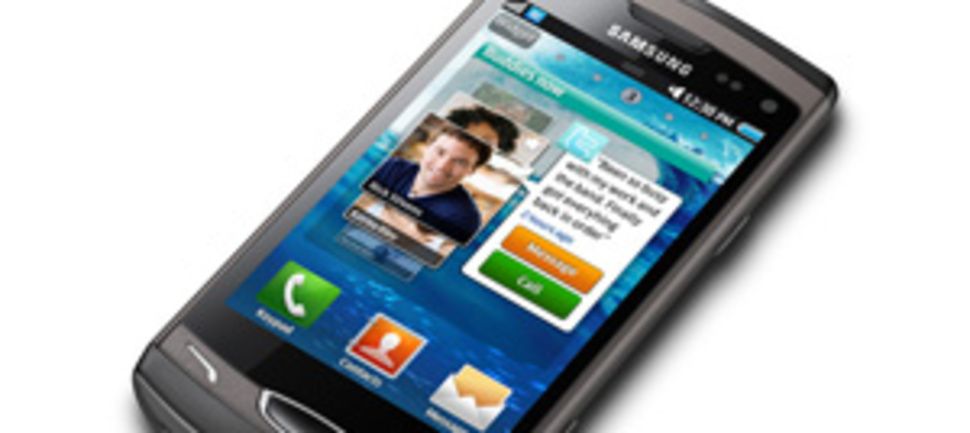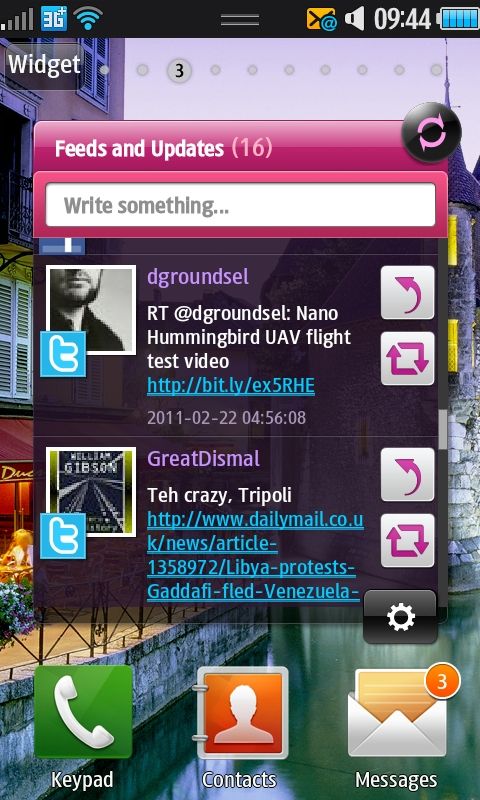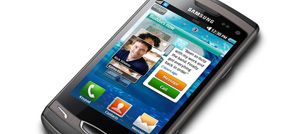Samsung’s original Wave from last year was an attempt at a high-functioning smart phone at a lower than usual price, thanks to Samsung’s Bada OS, which is supposed to be cheaper to implement than the likes of Android. It did a pretty good job too, and the new version is bigger, and just a little bit better, if a bit pricier, with larger screen, and an improved camera video editing facilities.
Our quick take
The Samsung Wave II is more of a tweak to the original than an overhaul, though that means it’s still a very decent smart phone at a good price. The bigger screen is nice to have but you’ll only want to upgrade from the original if you’re desperate for HD video recording. And while Samsung says it’s committed to the Bada platform, with some Android handsets available for a similar price or even less, it’s getting hard to see the advantage.

Samsung Wave II - 3.5 / 5
| FOR | AGAINST |
|---|---|
|
|
The Wave II is at the top of Samsung’s Wave range, above the 723 and 523 and is distinctively bigger than the original, now measuring 124 x 60 x 12mm and 135g (up from 118 x 56 x 11m and 118g) with a screen that’s been stretched from 3.3 inches to 3.7 inches. The diamond-shaped lens aperture is still there on the back, but the menu button on the front has lost the diamond styling, replaced with a broader, more practical oblong.
With Bada running underneath, what you see on top is Samsung’s latest TouchWiz 3.0 user interface, which offers up to ten screens ready to be populated with a variety of widgets. Strangely, though there are widgets aplenty, you can’t add shortcuts from the menu, though you can move them around in the menu itself.
The widgets are mostly pretty good too. As well as various news feeds, including stocks info, Feeds and Updates pulls together your Facebook and Twitter updates, while Buddies Now highlights the latest from your favourite posters. There’s more social networking props in the Social Hub, which lists your email and text updates along with your social networking accounts.
Posting your latest missives is a pleasure too thanks to the well-spaced virtual keyboard and the sensitive capacitive touch screen. Useful symbols like @ and .com have their own keys and the Quicktype function allows you to type without removing your fingers from the keyboard - it works, but it takes a bit of getting used to.


Controls on the Dolphin 2.0 browser aren’t the best looking but at least they’re functional, and while there’s only Flash Lite support, there was no trouble viewing YouTube videos.
The 5-megapixel camera with LED flash is similar to the one on the original Wave but with one crucial difference - it can film video in 720p HD. Pics are generally sharp (helped by the anti-shake feature) and colour balance is good, plus there’s blink detection (it flags up a pic if it detects closed eyes when you’ve pressed the shutter) as well as face detection and macro close-up settings.
The HD video is impressively sharp and there’s also an on-board video editor which allows you to trim your videos at either end, split them in the middle and add captions and effects as well as music. It’s easy to use when splicing a few clips together on the hoof, but you’ll want to transfer them to a computer if you want to do anything fancy. Also, the film editor will automatically reduce the quality of the film for posting online, without the option to retain it in HD.
Samsung’s AllShare DLNA capability allows you to connect to a home network or compatible TV and display your phone’s content on the big screen, though the phone’s own screen gives a good account of itself when watching video. It’s not the AMOLED model we saw on the original Wave but it’s hard to tell much of a difference between that and the Wave II’s 480 x 800-pixel Super-clear LCD. Handy also that it includes an option to stretch films to fit the screen.
Music-wise there’s an eight-setting equaliser with a further half-dozen effects settings for concert hall, bass enhancement, etc, though the rather woolly headphones are no better than you’d expect at this price level.
The 2GB of memory on board is a good start, though you can add up to another 32GB via microSD card. Battery life held up fairly well too, delivering a good day and a half of fairly heavy use.
To recap
A solidly decent smart phone though it’s not necessarily much cheaper than comparable Androids


